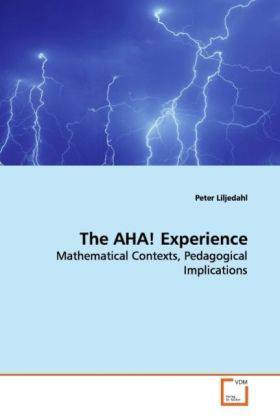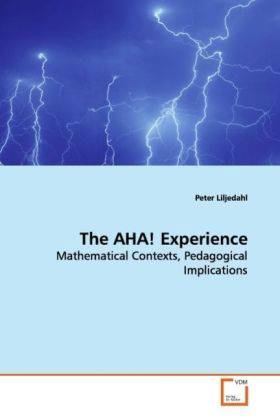
- Afhalen na 1 uur in een winkel met voorraad
- Gratis thuislevering in België vanaf € 30
- Ruim aanbod met 7 miljoen producten
- Afhalen na 1 uur in een winkel met voorraad
- Gratis thuislevering in België vanaf € 30
- Ruim aanbod met 7 miljoen producten
Zoeken
The AHA! Experience
Mathematical Contexts, Pedagogical Implications
Peter Liljedahl
Paperback | Engels
€ 99,95
+ 199 punten
Omschrijving
The AHA! experience is a term that captures the
essence of illumination. It is the experience of
having an idea come to mind with brevity, suddenness,
and a sense certainty. This book examines this
extra-logical process within a number of different
mathematical contexts in pursuit of three questions:
What is the essence of the AHA! experience? What is
the effect of an AHA! experience on a learner? Can
the AHA! experience be controlled, and if so can it
be invoked? The data for this pursuit comes from
three related studies focused on three distinct
groups of participants undergraduate mathematics
students, prominent mathematicians, and
preservice teachers. The results from each of these
studies combine to present some surprising
conclusions regarding the very nature of the AHA!
experience and the profundity of the effect that this
experience has on learners and mathematicians alike.
The methodology used as well as the finer details of
the analysis will serve well anyone who is either
interested in gaining a better understanding of the
AHA! experience or curious about how to capitalize on
the potential affordances it offers as a teaching and
learning tool.
essence of illumination. It is the experience of
having an idea come to mind with brevity, suddenness,
and a sense certainty. This book examines this
extra-logical process within a number of different
mathematical contexts in pursuit of three questions:
What is the essence of the AHA! experience? What is
the effect of an AHA! experience on a learner? Can
the AHA! experience be controlled, and if so can it
be invoked? The data for this pursuit comes from
three related studies focused on three distinct
groups of participants undergraduate mathematics
students, prominent mathematicians, and
preservice teachers. The results from each of these
studies combine to present some surprising
conclusions regarding the very nature of the AHA!
experience and the profundity of the effect that this
experience has on learners and mathematicians alike.
The methodology used as well as the finer details of
the analysis will serve well anyone who is either
interested in gaining a better understanding of the
AHA! experience or curious about how to capitalize on
the potential affordances it offers as a teaching and
learning tool.
Specificaties
Betrokkenen
- Auteur(s):
- Uitgeverij:
Inhoud
- Aantal bladzijden:
- 160
- Taal:
- Engels
Eigenschappen
- Productcode (EAN):
- 9783639064704
- Verschijningsdatum:
- 15/12/2008
- Uitvoering:
- Paperback
- Formaat:
- Trade paperback (VS)
- Afmetingen:
- 152 mm x 229 mm
- Gewicht:
- 222 g

Alleen bij Standaard Boekhandel
+ 199 punten op je klantenkaart van Standaard Boekhandel
Beoordelingen
We publiceren alleen reviews die voldoen aan de voorwaarden voor reviews. Bekijk onze voorwaarden voor reviews.








